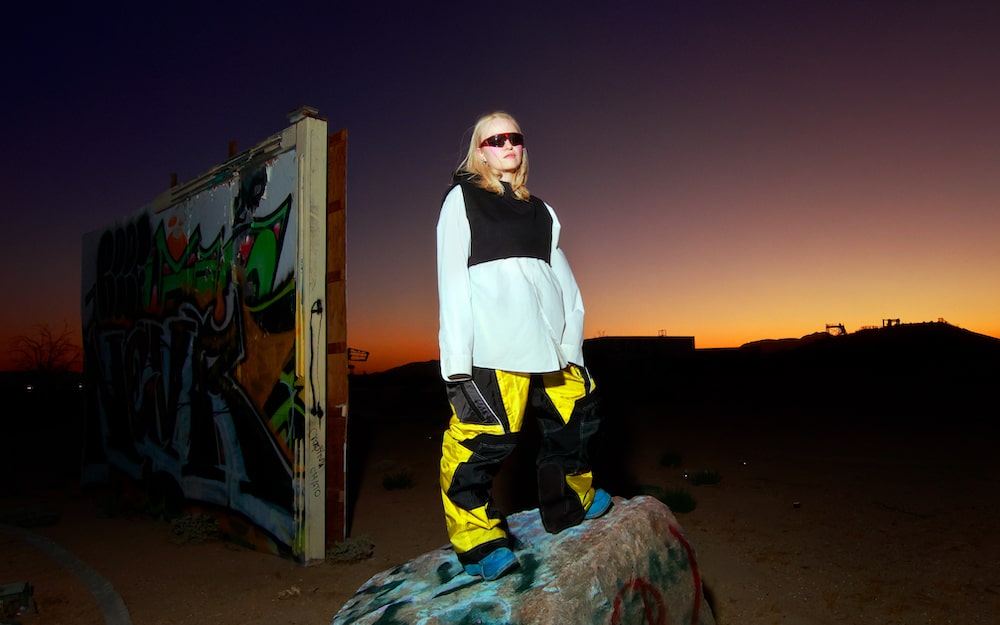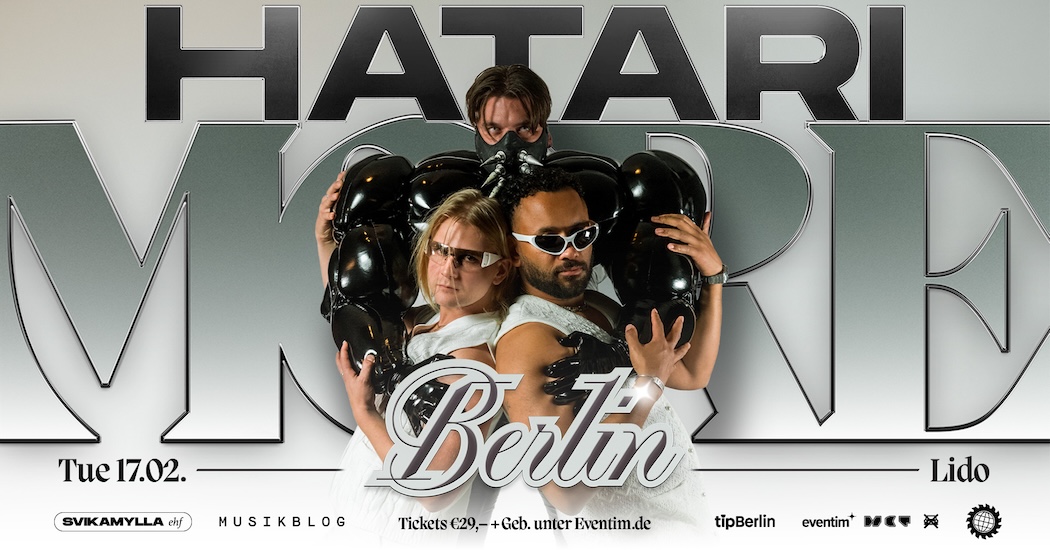
We caught up with KUČKA, the talented producer, vocalist, and creative dynamo, to discuss the release of her second full-length album, Can You Hear Me Dreaming?, now available on LUCKYME®. In this new phase, Laura Jane Lowther, the genius behind KUČKA, transitions from personal storytelling to a world of whimsical fantasy. She delves into “emotional voyeurism,” a term she coined to describe the attempt to understand someone from an imaginative emotional perspective rather than a purely logical one. Embracing the quirks of her “cartoon brain,” driven by dream logic where symbols and imagery interact unpredictably, she uses them to uncover deeper emotional layers. Her openness to reverie is evident as she transcends the literal, opting for poetic ambiguity. These concepts, combined with her decade-long experience in the studio, are palpable across the 12 tracks of meticulously crafted electronic production and captivating pop songwriting.
KALTBLUT: Congratulations on your upcoming album, Can You Hear Me Dreaming? What inspired the title of the album?
I actually came up with the title as part of an email address first which is so mundane but also kind of funny. I liked the imagery it provoked and I guess how you represent yourself online can be poetic?? When I started writing my album I thought it encapsulated all of the ideas that were forming so I decided to make it the title pretty early on in the writing process.
KALTBLUT: Your previous work, especially Wrestling, was known for its introspective and autobiographical nature. What caused you to shift towards writing from different perspectives in this new album?
When I collaborate with other producers I sometimes have to work within themes that they have decided for their project and I always find it taps into cool little pockets of my imagination, so I thought why not do that for my own project too.
KALTBLUT: You coined the term “emotional voyeurism” for projecting stories onto strangers. Can you explain how this concept influenced the creation of Can You Hear Me Dreaming??
I found that I was melding different stories and scenarios together and in order to make something cohesive out of them lyrically I needed to understand how I would process these situations. Some of the people I was writing about were friends or people I knew, some were strangers and some were a mixture or completely made up scenarios. The common thing that I noticed was that I did feel a sense of voyeurism when I was writing, like I was peeking through a window into their thoughts.
KALTBLUT: You worked closely on this album with your wife, Dillon Howl. How did this collaboration shape the overall sound and theme of the album?
Dillon is a visual artist and director so a lot of the conversations we have are based around the themes and ideas behind the songs. I think particularly with this record it influenced the world building and imagery of the record.
KALTBLUT: Given your past collaborations with artists like Flume, A$AP Rocky, and Kendrick Lamar, how does your approach differ when working on solo material versus collaborative projects?
With collaborative projects, you are usually working to some kind of brief, so there are more boundaries to work within. When you are working for yourself I think there’s more room for experimentation.
KALTBLUT: You mentioned exploring your “cartoon brain” and drawing inspiration from surreal creatures and rainy cityscapes. Can you tell us more about these visual influences and how they translate into your music?
When I was writing, I put together a sort of mood board. I grabbed images of people and objects that I liked and kept them all on the desktop of my computer. Whenever I was making aesthetic or stylistic choices and needed a bit of help or guidance I would go back to them. It was a nice way of making decisions since it was super loose and subjective.
KALTBLUT: How important is the visual component in your work, and do you plan to integrate it more into your live performances and music videos?
The visual component is super important to me. I always love when an artist creates a world for their record as I think it helps translate what’s going on in their head. Also since music isn’t tangible it’s really nice to make art for a vinyl or CD that you can physically hold and feel like you actually created something real.
KALTBLUT: Would you say that your production style has drastically evolved since your debut EP in 2012?
Definitely. I have the same energy that comes through but the actual process of producing has changed completely. I used to have to piece together tracks bar by bar and it used to take me ages to get an arrangement together whereas now I create tracks by looking at the overall picture a lot more.
KALTBLUT: Can you discuss any new techniques or equipment you have experimented with while producing this album?
I think the way I work is pretty idiosyncratic but I can’t say that I invented any new techniques or anything specifically for this record. One thing I wanted to keep consistent was the synths being quite bright and digital and the drums being more gritty and sample based. I really like that combination of textures.
KALTBLUT: You mentioned the album as being something you’d listen to “while driving through a burning city.” How do you balance themes of reality escapism and tackling real-world issues in your music?
It feels impossible to understand real-world issues at the moment. We have so much information coming at us from all angles but a lot of politics and world events are totally absurd and feel totally inhumane. To me it doesn’t make sense for music to feel shiny and happy all the time when I think most people don’t feel that way.
KALTBLUT: Following the acclaim of Wrestling, how did you approach the creative process for this album? Were there any pressures or expectations you felt you had to meet?
Actually I felt no pressure for this record at all. The labels that I work with are pretty cool with me just expressing what I want and I’ve never felt pressure to hit streaming numbers. I’m sure they have expectations behind the scenes but they haven’t been intense about it to me.
KALTBLUT: Can you give us a hint about any future projects or collaborations that you’re excited about?
I’m really excited about the new project ‘PESH’ that I’ve been working on with my wife Dillon. We released our first track on an awesome compilation with Foundation Fm earlier this year and there are actually 2 PESH tracks on the album but we have made loads more. It’s spoken word over intense techno inspired beats and Dillon’s lyrics and imagery are incredible. I love being able to produce for other voices, and since it’s spoken word it’s been great to just focus on the rhythmic elements. A lot of the tracks have no melodic components at all.

KALTBLUT: You’ve supported prominent artists like Flume at major events such as Coachella. How do live performances influence your music and vice versa?
The energy of huge live events is something that is super infectious. I think performing at those shows and really getting a feel for what works well live has no doubt influenced my writing, although my favorite tracks are still the ones that can be best appreciated alone with some headphones and introspection.
KALTBLUT: With the release of Can You Hear Me Dreaming?, do you have any plans for a tour? What can fans expect from your live shows going forward?
Yes I’m starting to work on my live set right now. I’m flipping the tunes and trying to create new versions that will only live in my live set. I want to create an experience that you won’t be able to get from the record.
KALTBLUT: Looking back at your journey from your debut EP to now, how would you describe your artistic growth and evolution?
When I first started making music I was really just experimenting with sounds and the outcome was really unknown. It was a great way of learning but it was quite frustrating at times since I couldn’t control my output as much as I would have liked. Now, since I have way more knowledge of production and instrumentation, I can really craft my music and express things exactly how I want. Of course not every track ends up working 100% but it’s getting much closer.
KALTBLUT: What drives your passion for music and creativity, and how do you stay inspired amidst an ever-changing industry?
I love the process of making music and art. The fact that the industry is constantly changing certainly provides it’s challenges but also I think it gives artists different ways to approach their creativity and change things up. For example, I love that humor is becoming increasingly important in the promotion of music due to Tik Tok and meme culture and trying to tie this into videos and content has been fun.


